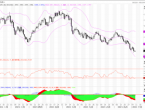
Eden
Oct 26, 2021 10:52
On Friday (October 8), the U.S. Senate approved a temporary increase in the U.S. debt ceiling. The market’s improved risk sentiment pushed up U.S. Treasury yields and the U.S. stock market. The benchmark 10-year Treasury yield hit a four-month high. The yen was sold off for the second consecutive trading day, suggesting that the trend of USD/JPY retreat from the 19-month high set in September has ended. If the non-agricultural data performs well in the day, the currency pair is expected to hit the high point since 2020 in the market outlook.
Undermining the attractiveness of the yen as a safe haven is the recent agreement between the Democrats and Republicans to raise the US debt ceiling. Before reaching an agreement, the market is worried that the US government may default on its current debt, which may cause a major chain reaction in the global market. Nevertheless, the yen bulls seized this opportunity to regain some of their losses. As global markets become more risk-seeking, the short-term correction of the USD/JPY price rally may be coming to an end.
At present, the market is eagerly awaiting the release of the key US employment report in September. Last month’s data was unexpectedly weak. This time the market predicts that the number of non-agricultural employment will increase by 500,000 from the previous value. If the actual situation is in line with market expectations or a slight upward movement, the dollar will rise sharply, and if the non-agricultural employment data is worse than expected, the dollar will fall sharply.
Both the US ADP’s employment data yesterday and today’s initial jobless claims data were better than expected, which increased the dollar’s upward mobility. However, this has not been fully reflected on the daily chart of USD/JPY, as the market is waiting for the key non-agricultural employment data to be released in the evening. In any case, the Fed may have no choice but to reduce asset purchases (shrink the scale of bond purchases), because the current inflation environment is not as "transient" as initially thought.
Shunichi Suzuki, the Japanese Finance Minister, also issued a noteworthy statement, stating that he will pay close attention to the exchange rate of the yen in case of subsequent sharp fluctuations. He hinted that the level of 112.40 is a concern
The interest rate differential between the United States and Japan will continue to drive this market, so pay close attention to the 10-year yield in the United States and, of course, the 10-year yield in the Japanese government bond market. With the convergence of key data and risk events, the market will face volatility in the next few days, and the Fed will not make any new decisions in the short term. Investors need to be cautious and can use the currency pair as an indicator of the relative strength of the yen itself.
At present, the relative strength index (RSI) of USD/JPY has fallen from the overbought level and is expected to rise further to the highest price of 112.23 in November 2020, and then approach 112.66 next week.
On the downside, the 111.00 support level is still strong. If the fundamentals are stable as expected, the support level is unlikely to be broken. If the price does fall back to 111.00, the bulls may see this as an attractive long entry zone. It seems that it is only a matter of time before the resistance level is broken.
(Daily chart of USD/JPY)
GMT+8 At 15:18 on October 8, the USD/JPY traded at 111.97/99.


Oct 26, 2021 10:52